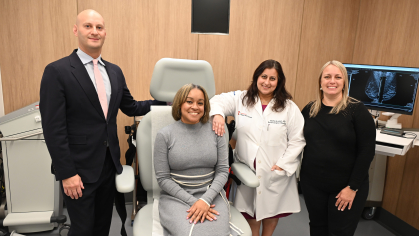How Alcohol Ads in Your Feed May Lead to Alcohol in Your Glass

Teens and young adults who see alcohol promotions in their social media feeds are more likely to drink and binge drink, according to a Rutgers Health review of 31 studies that tracked links between exposure to digital alcohol marketing and real-world alcohol use.
Jon-Patrick Allem, an associate professor at the Rutgers School of Public Health and Rutgers Robert Wood Johnson Medical School and a senior author of the study, said the public debate about time spent on social media misses the most important point.
“There’s growing evidence that it’s not how long you spend on social media but what content you see that affects you,” Allem said. “Young people being exposed to alcohol promotions online is associated with alcohol use across different contexts and populations.”
The meta-analysis in The Lancet Public Health pooled data from 62,703 people. Participants exposed to digital alcohol marketing content, compared with those not exposed, had greater odds of reporting past 30-day alcohol use, binge drinking and susceptibility to use alcohol among never users.
“Across this international sample, those who saw alcohol marketing online were about twice as likely to report drinking or binge drinking,” said Scott Donaldson, lead author and an assistant professor of general internal medicine at Rutgers Robert Wood Johnson Medical School.
Although youth drinking is declining overall, personalized feeds still can normalize alcohol for subsets of young people who linger on such content.
“Algorithmic amplification means a small cue can be shown again and again,” Allem said.
Researchers combed six databases for studies published since the emergence of major social platforms and combined results with multilevel random effects models.
Across the studies, exposure to digital marketing was associated with roughly 75% higher odds of any reported drinking in the past 30 days and about 80% higher odds of binge drinking. Susceptibility to drinking among never-users was elevated by a similar margin, and lifetime drinking also showed a significant association.
The signal was strongest in adolescents using social media, which now mix paid placements, branded posts and influencer partnerships with user-generated clips. In this literature, “digital alcohol marketing” refers to content designed to increase alcohol use, including brand pages, sponsored influencer videos, promotional campaigns and contests, as well as web and app advertising.
Entirely unsponsored content doesn’t count.
Many of the studies underlying the meta-analysis were cross-sectional surveys, which can detect associations but cannot prove that ads push teens to start drinking rather than reaching those already inclined to drink. The authors call for stronger designs to clarify what comes first: exposure or alcohol use.
Allem said his group is testing that question directly. In a pilot experiment with about 2,000 young adults, participants who watched lifestyle influencer videos that incidentally featured alcohol were about 1.5 to 2.5 times more likely to express interest in drinking than peers who viewed matched videos with no alcohol, even after accounting for recent drinking.
“Subtle cues can move intentions,” said Allem, echoing an argument he made in a recently published letter to the journal Addiction. “We need ecologically valid experiments that track behavior over time.”
The review found that exposure was particularly pronounced on social media and effects appeared stronger for adolescents than adults, a pattern that could guide regulators toward youth-specific safeguards.
Platforms already collect age and interest data that could curb exposure, but industry self-regulation online is inconsistent, and age gating is easy to bypass.
“They could solve this overnight,” Allem said. “The question is will, not capability.”


